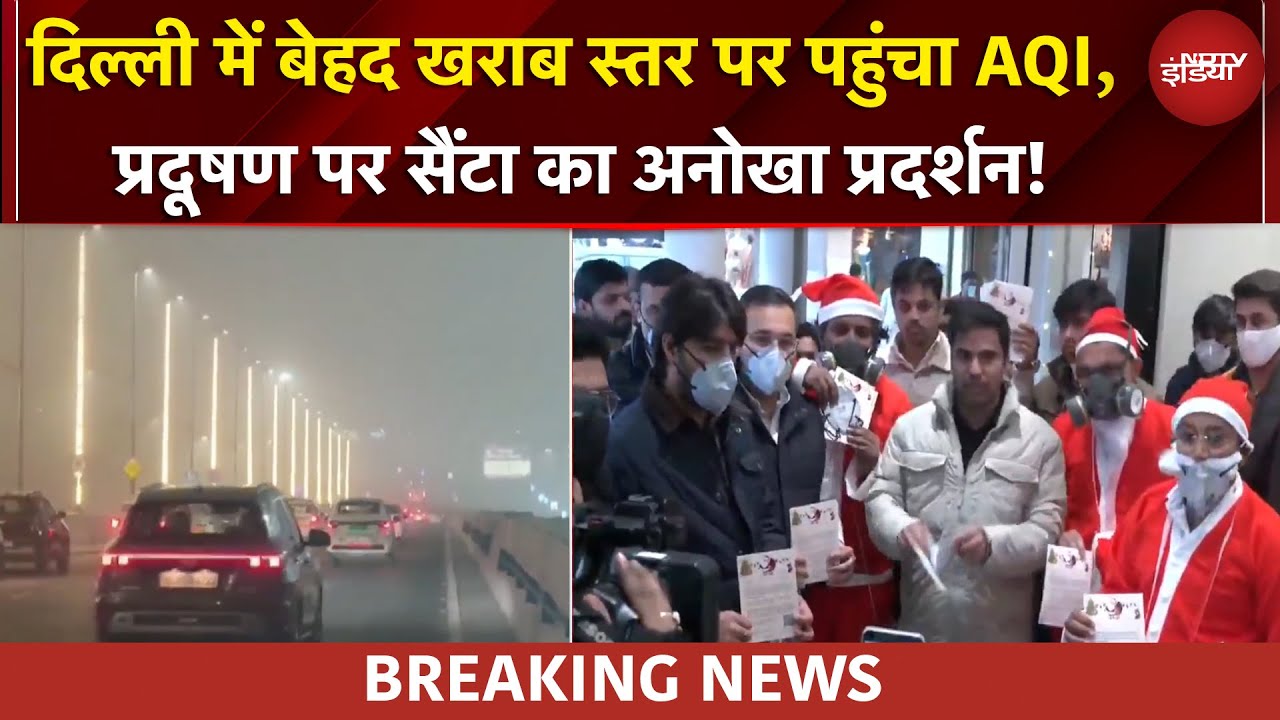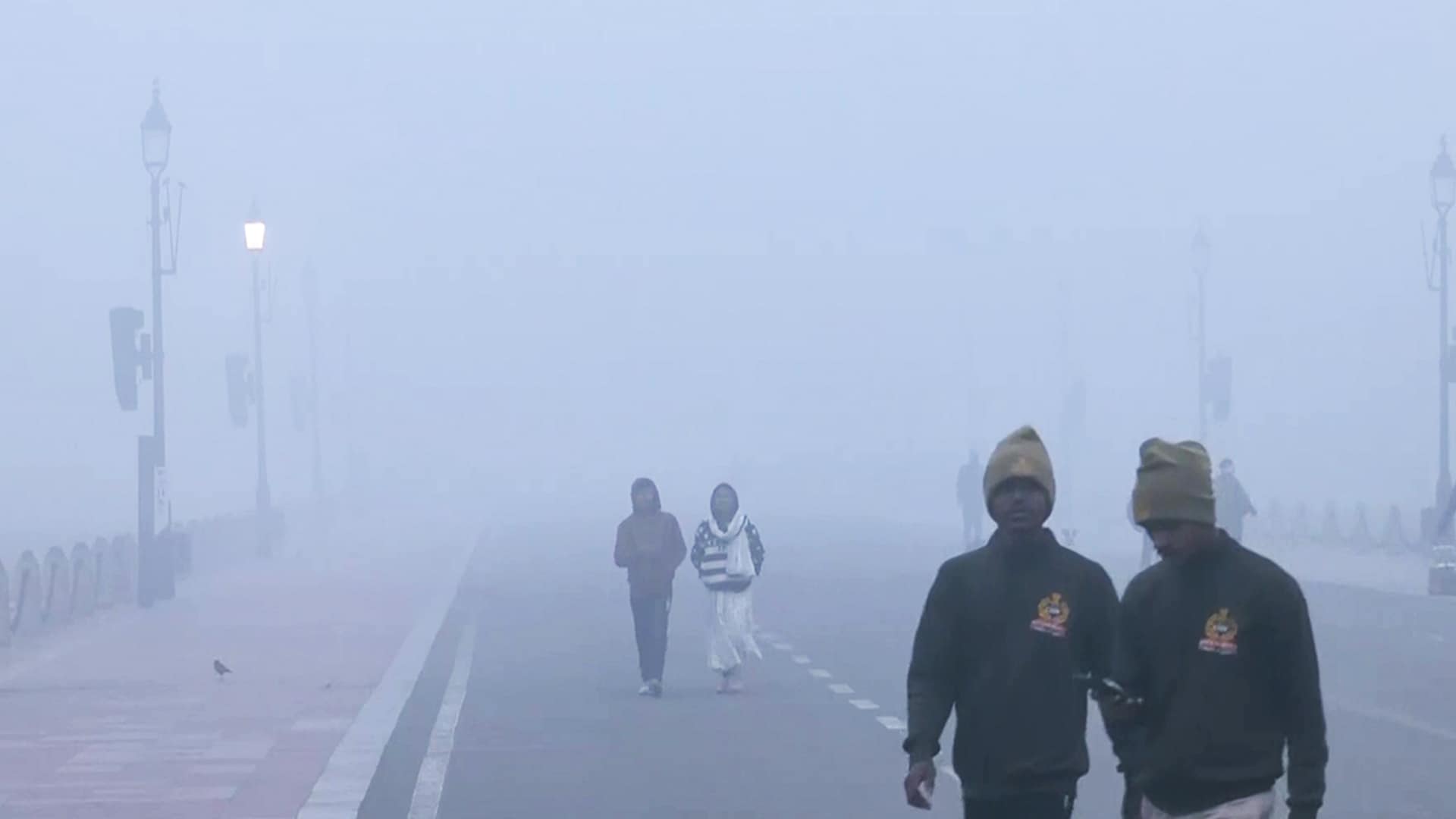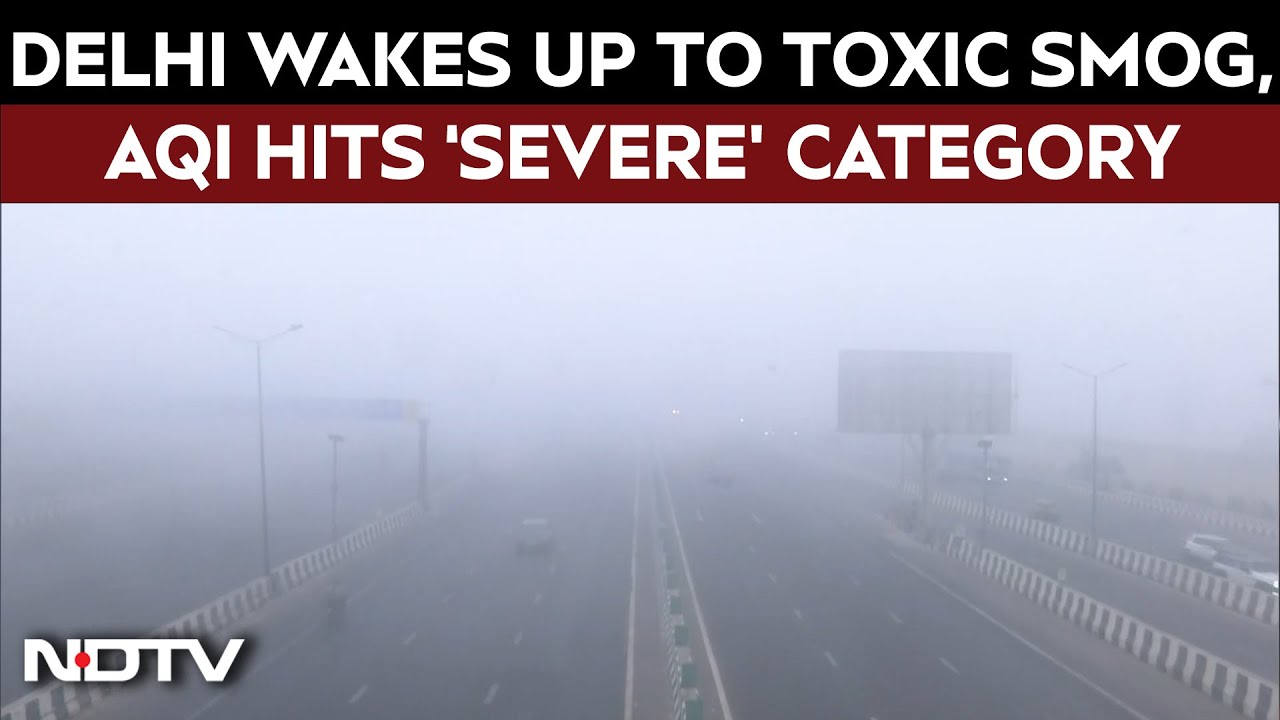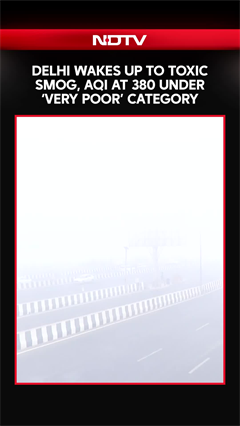- Home/
- Improvement In Delhi's PM2.5 Levels Since 2015-17 Halted In 2023: Report
Improvement In Delhi's PM2.5 Levels Since 2015-17 Halted In 2023: Report

Delhi-NCR recorded the longest spell of 'very poor' or worse air quality and the maximum number of smog episodes in November and December 2023 in the last six years, according to a new analysis.
The Centre for Science and Environment (CSE), an independent think-tank that analysed pollution data for Delhi-NCR, said the gradual long-term improvement in annual PM2.5 levels since 2015-17 halted in 2023.
This occurred despite cleaner-than-usual summer and monsoon seasons and significantly reduced intrusion of smoke from farm fires in northern states. However, this winter witnessed unusually low surface wind speeds, trapping high levels of local pollution.
Due to the impact of unusual winter levels, the overall annual levels have plateaued and worsened, reversing the gains of the long-term downward trend, the CSE said.
Despite a decrease in stubble burning contributing to Delhi's pollution this year, coupled with increased rainfall in November and milder winter conditions, the annual level should have improved. Instead, adverse meteorological conditions, specifically lower wind speeds, exacerbated the situation due to persistently high local pollution, it added.
Delhi had been experiencing a consistent decline in its annual PM2.5 levels since 2015-17, with 2020 being the only outlier due to pandemic lockdowns.
However, this downward trend halted in 2023. Delhi's PM2.5 annual average for 2023 (as of December 29) stood at 100.9 micrograms per cubic metre, marking a 2 per cent increase against 2022 and 6 per cent higher than the remarkably clean 2020.
The average annual PM2.5 concentrations were 115.8 microgrammes per cubic metre in 2018, 109.2 in 2019, 95.1 in 2020, 106.2 in 2021, 98.6 in 2022, and 100.9 in 2023, according to the data.
The analysis revealed that while summers are becoming cleaner, winters are becoming more polluted.
In 2023, the summer months (March to June) were significantly less polluted (14-36 per cent) than in 2022. Conversely, the winter months of January, November and December were much more polluted in 2023 (12-34 per cent) compared to the same months in 2022, the CSE said.
It said the maximum number of smog episodes occurred in November-December 2023, surpassing the last six years' corresponding periods.
A smog episode is defined as at least three or more consecutive days with air quality in the 'severe' category.
"Delhi typically experiences two smog episodes in November and December. In 2023, by December 24, there were three episodes, and on December 30, Delhi was witnessing its third continuous day of 'severe' air quality, marking the city's fourth smog episode," the CSE said.
"Overall, November-December 2023 seems to have had the most consistently poor air compared to the last six winters, with minimal fluctuations in daily PM2.5 levels. The data indicates it was the longest spell of 'very poor' or worse air in the last six years," it said.
(Except for the headline, this story has not been edited by NDTV staff and is published from a syndicated feed.)
also read
Delhi Struggles With Very Poor Air Quality, Dense Smog Reduces Visibility
Indo-Asian News ServiceDelhi AQI 'Severe' At 16 Places, Overall Reading In 'Poor' Category
Press Trust of India'Santas' In Gas Masks Hit Delhi Streets To Protest Air Pollution
Reported by Tejshree Purandare, Edited by Akash Majumder
Latest Stories
- Indo-Asian News Service | Monday December 22, 2025
The national capital continued to reel under heavy smog on Monday morning, with air quality levels remaining in the "very poor" category and several areas slipping into "severe" pollution levels.
- Press Trust of India | Sunday December 21, 2025 , New Delhi
The air quality in the national capital was recorded in the 'very poor' category on Sunday morning with an overall Air Quality Index (AQI) reading of 377, according to the Central Pollution Control Board (CPCB).
- Reported by Tejshree Purandare, Edited by Akash Majumder | Sunday December 21, 2025
People shopping in Delhi's South Extension and Connaught Place were surprised to see several Santa Clauses walking through the markets wearing gas masks.
- Indo-Asian News Service | Sunday December 21, 2025 , New Delhi
Air pollution levels in the national capital deteriorated sharply on Sunday, edging dangerously close to the "severe" category as dense smog, plunging temperatures, and thick fog blanketed large swathes of northern India.
- Indo-Asian News Service | Sunday December 21, 2025 , New Delhi
Exposure to air pollution may have serious implications for a child's developing brain and cause damage to language development, memory, and mood regulation, according to a study.
................................ Advertisement ................................
Latest Videos
Opinion
Blog | Well Done, Delhi. You've Turned Lung Sacrifice Into A Badge Of HonourSaikat Kumar Bose
Monday November 10, 2025Till some years back, Delhiites would ask angry questions to those in power about the capitals annual tryst with toxic air. This has changed. Those in the driving seat dont see the need to answer now.
Opinion | Why Indians Have Just Given Up On Air Pollution CrisisTanushree Ganguly
Friday December 20, 2024While some may argue that people in Delhi are now more aware of air pollution than they were a decade back, my rebuttal would be that awareness does not mean that people are concerned.
Opinion | You Must Outrage Over Filthy Air More Than Once A YearJyoti Pande Lavakare
Tuesday December 10, 2024Delhi welcomed us with monsoon rains and mangos. We were home. Fast forward a couple of years, in the winter of 2012, I found myself in denial about something other parents, mostly expats, were calling toxic air.
Opinion | Delhi's Air Pollution Situation Is Like A Bad MarriageNishtha Gautam
Friday November 22, 2024On a good day, such as today, the AQI reading in Delhi is 407. We are jubilant at the sickly sunshine trickling through the slightly dissipated smog. At least its not 1600.
दिवाली... पराली... सियासी जुगाली!Ashwini kumar
Monday November 18, 2024दिल्ली-एनसीआर में प्रदूषण का समाधान तो आज तक मिला नहीं. हर साल चिंतित होकर हम-आप सांसों की तकलीफ के साथ-साथ दिल और ब्लड प्रेशर के मरीज भी क्यों बनें?


















